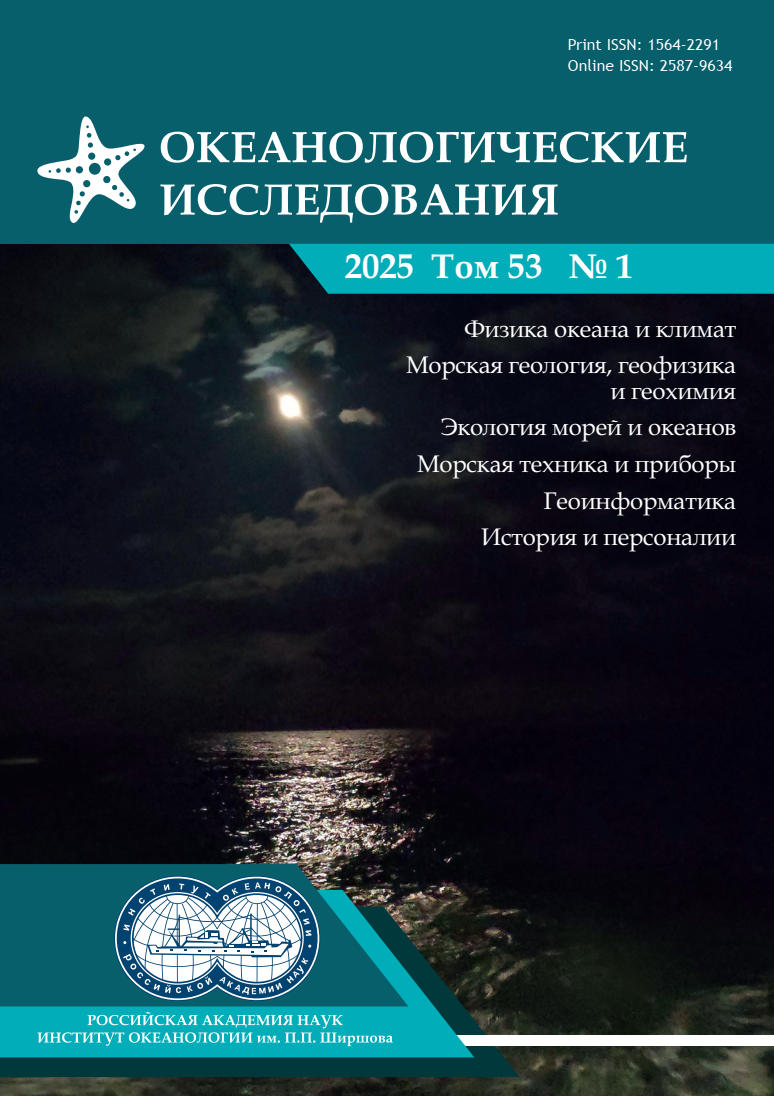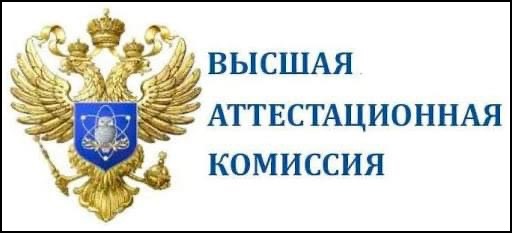ЭКОЛОГО-ГЕОХИМИЧЕСКАЯ ОЦЕНКА ДОННЫХ ОТЛОЖЕНИЙ В УСЛОВИЯХ АНТРОПОГЕННОЙ НАГРУЗКИ
на примере Калининградского залива Балтийского моря
Аннотация
На основании данных о содержании тяжелых металлов (Pb, Cu, Ni и Co) выполнена оценка уровня загрязнения донных отложений Калининградского залива. Для этой цели использованы общепринятые показатели – факторы загрязнения (Cf) и степень загрязнения (Cd), модифицированный суммарный показатель загрязнения (Zу), индекс геоаккумуляции (Igeo ) и индекс антропогенной нагрузки (PLI). Результаты расчетов различных показателей оказались вполне сопоставимы, а уровень загрязненности донных отложений залива можно, в целом, охарактеризовать как низкий. В то же время, если рассматривать уровни загрязненности донных осадков отдельных седиментационных районов залива, выделенных по морфологическим, гидродинамическим и литологическим признакам, то между ними наблюдаются некоторые различия. По всем показателям наименьшим уровнем загрязнения характеризуются донные отложения центрального района, что объясняется особенностями литодинамики и гранулометрического состава осадков. Донные отложения эстуарного и юго-западного районов также оцениваются как слабозагрязненные, однако в некоторых точках они соответствуют умеренному уровню загрязнения. Результаты исследования свидетельствуют об отсутствии в донных осадках залива антропогенной составляющей тяжелых металлов, что обусловлено, в частности, действием естественного механизма самоочищения.
Литература
- Богданов Н. А., Воронцов А. А., Морозова Л. Н. Тенденции химического загрязнения и динамика Калининградского залива // Водные ресурсы. 2004. Т. 31. № 5. С. 576–590. https://doi.org/10.1023/B:WARE.0000041921.10115.c9.
- Даувальтер В. А. Геоэкология донных озер. Мурманск: Изд-во МГТУ, 2012. 242 с.
- Емельянов В. А., Митропольский А. Ю., Наседкин Е. И. Геоэкология Черноморского шельфа Украины. Киев: Академпериодика, 2004. 324 с.
- Емельянов Е. М., Блажчишин А. И., Кобленц-Мишке О. И., Кравцов В. А., Стрюк В. Л., Харин Г. С. Экологическая и геохимическая обстановки в восточной Балтике. В кн.: Сборник статей по материалам конференции «Проблемы изучения и охраны природы Куршской косы». Калининград: ГП «КГТ», 1998. С. 148–185.
- Закруткин В. Е., Гибков Е. В., Решетняк О. С., Решетняк В. Н. Донные отложения как индикатор первичного и источник вторичного загрязнения речных вод углепромышленных территорий Восточного Донбасса // Известия РАН. Серия географическая. 2020. Т. 84. № 2. С. 259–271. https://doi.org/10.31857/S2587556620020168.
- Комов В. Т., Томилина И. И. Токсичность донных отложений озер северо-запада России: влияние закисления и тяжелых металлов // Биология внутренних вод. 1999. № 1–3. С. 141–147.
- Куракина Н. И., Шлыгина Н. С. Оценка состояния донных отложений по результатам контрольных измерений концентраций загрязняющих веществ в восточной части Финского залива // Известия СПбГЭТУ «ЛЭТИ». 2017. № 4. С. 82–78.
- Нормы и критерии оценки загрязненности донных отложений в водных объектах Санкт-Петербурга. Региональный норматив, разработанный в рамках российско-голландского сотрудничества по программе PSO 95/RF/3/1. СПб., 1996. 20 с.
- Петелин В. Н. Гранулометрический анализ морских донных осадков. М.: Наука, 1967. 129 с.
- Регион Калининградского / Вислинского залива: современное состояние и сценарии развития / под ред. В. Кушевски, Г. М. Федорова, Б. В. Чубаренко, В. А. Гриценко. Калининград: Изд-во БФУ им. И. Канта, 2014. 216 с.
- Решетняк О. С., Закруткин В. Е. Донные отложения как источник вторичного загрязнения речных вод металлами (по данным лабораторного эксперимента) // Изв. ВУЗов. Северо-Кавказский регион. Естественные науки. 2016. № 4. С. 102–109.
- Сает Ю. Е., Ревич Б. А., Янин Е. П., Смирнова Р. С., Башаркевич И. Л., Онищенко Т. Л., Павлова Л. Н., Трефилова Н. Я., Ачкасов А. И., Саркисян С. Ш. Геохимия окружающей среды. М.: Недра, 1990. 335 с.
- Чечко В. А., Топчая В. Ю. Многолетняя динамика состава верхнего слоя донных отложений в неглубоком водоеме лагунного типа (на примере Калининградского залива Балтийского моря) // Известия КГТУ. 2023. № 71. С. 147–158. https://doi.org/10.46845/1997–3071–2023–71–147–158.
- Чечко В. А., Топчая В. Ю. Пространственное распределение тяжелых металлов в донных осадках Калининградского залива // Успехи современного естествознания. 2022. № 3. С. 86–91. https://doi.org/10.17513/37893.
- Чечко В. А., Топчая В. Ю., Бабаков А. Н. Новая карта донных осадков Калининградского залива Балтийского моря // Известия КГТУ. 2023. № 69. С. 44–56. https://doi.org/10.46845/1997–3071–2023–69–44–56.
- Blazchishin A. I. Zur Geoekologie des Kurischen und des Frischen Haffs // Schriftenr. f. Geowiss. Berlin. 1998. Vol. 7. P. 39–57.
- Chechko V. A. Evolution of sedimentation in the Vistula Lagoon of the Baltic Sea due to anthropogenic impact // Revista de la Universidad del Zulia. 2021. No. 33. P. 131–148. https://doi.org/10.46925//rdluz.33.10.
- Chechko V., Chubarenko B. Influence of hydraulic modification of the Vistula Lagoon in XIX century on sedimentation. Abstract volume of 11th Baltic Sea Science Congress ‘Living along gradients: past, present, future’. Rostock. 2017. P. 323.
- Forstner U. Metal Pollution in the Aquatic Environment. Berlin: Springer–Verlag, 1979. 210 p.
- Hakanson L. An ecological risk index for aquatic pollution control – A sedimentological approach // Water Research. 1980. Vol. 14. P. 975–1001. https://doi.org/10.1016/0043–1354(80)90143–8.
- Kennish M. J. Coastal lagoon. In: Kennish M. J. (Ed), Encyclopedia of Estuaries, Springer. 2015. Р. 140–143. https://doi.org/10.1007/978–94–017–8801–4_47.
- Liu Xin–wei, Wu Jing–yang, Cai Yue–gin Bacrground study on non–residual phase of elements in Changjiang and Huanghe estuarine sediments // Chinese Journal of Oceanology and Limnology. 1996. Vol. 14. No. 3. P. 282–290. https://doi.org/10.1007/BF02850392.
- Müller G. Schwemetalle in den Sedimenten des Rheins–Ver–änderungen seit 1971 // Umschau. 1979. Vol. 79. P. 778–783.
- Tomlinson D. L., Wilson J. G., Harris C. R., Jeffney D. W. Problems in the assessment of heavy metal levels in estuaries and the formation of a pollution index // Helgoläander Meeresuntersuchungen. 1980. Vol. 33. P. 566–572. https://doi.org/10.1007/BF02414780.
- Uscinowicz S., Zachowicz J. Geochemical Atlas oft he Vistula Lagoon. Warsawa, 1996. 84 p.
- Windom H. L., Schropp S. J., Calder F. D. Natural trace metal concentrations in estuarine and coastal marine sediments of the southeastern United States // Environmental Sciences and Technology. 1989. Vol. 23. P. 314–320.
Передача авторских прав происходит на основании лицензионного договора между Автором и Федеральным государственным бюджетным учреждением науки Институт океанологии им. П.П. Ширшова Российской академии наук (ИО РАН)













